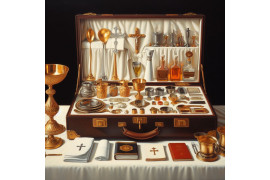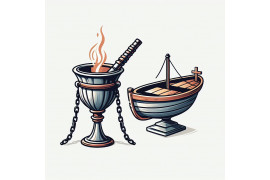Reduce smoke and enjoy a seamless candle experience with the use of a candle snuffer. Trim the wicks with scissors to prevent excessive smoke and ensure a clean burn. The cone shape of the snuffer helps to extinguish the flame without any lingering smell. By using a snuffer cap to gently extinguish the flame of a scented candle, you can minimize smoke production and create a more pleasant atmosphere. Candle tools like a snuffer cap are essential for maintaining the quality of your scented candle experience. Take a deep breath and enjoy the soothing ambiance. No more worrying about that lingering scent of smoke when you use a snuffer cap to extinguish your scented candles. Simply place the snuffer cap over the wick and snuff out the flame. No need to blow, which can release more smoke into the air. With a quick snuff, you can eliminate the smoke and enjoy the lingering aroma of your favorite scented liquid.
In addition to using a snuffer or scissors, another effective method for extinguishing a candle is placing a lid or cover on the jar or container. This helps prevent any smoke from being released into the air and also helps to maintain the wax pool and wick. This simple technique, using a snuffer cap and scissors, ensures that you can fully enjoy the delightful scent of your candles without any unwanted side effects. Just cover the wick with the snuffer cap and trim it with scissors for optimal enjoyment.
Say goodbye to smoky odors and hello to a clean, fresh ambiance with these practical tips for reducing smoke when extinguishing your scented candles. To minimize the mess and prevent smoke from filling the room, simply cover the candle with a wick dipper or use a bell snuffer. Discover how easy it is to enhance your sensory experience with a scented candle. The candle tools will help you manage the candle flame and maintain the wick for optimal fragrance quality.
Benefits of Using a Candle Snuffer for Smoke Reduction
Using a candle snuffer can be an effective way to reduce smoke when extinguishing candles. The snuffer covers the wick and extinguishes the flame, preventing smoke from escaping. Here are some key benefits of using a candle snuffer to cover the wick and reduce smoke.
Candle snuffers reduce smoke by cutting off oxygen supply to the flame.
When you place a snuffer cap over the scented candle flame, it cuts off the oxygen supply, causing the flame to go out gradually. This is an important step when using candle tools like a snuffer cap to extinguish the wick. By depriving the scented candle flame of oxygen, you minimize the amount of smoke produced during extinguishment. This is especially useful when dealing with scented candles that tend to produce more smoke than regular candles.
Using a snuffer prevents air disturbance, minimizing smoke release.
Blowing out a candle can often create air disturbance, which can result in more smoke being released into the air. However, when you use a candle snuffer, there is no need for blowing out the flame. Instead, you simply place the scented candle snuffer cap over the flame and allow it to extinguish naturally. This gentle method reduces air disturbance and helps minimize smoke production when using a candle flame. Whether you are using a scented candle or not, this technique can help create a more peaceful atmosphere.
Snuffers eliminate the need for blowing out candles, reducing smoke in the process.
Blowing out candles may seem like a simple task, but it can actually contribute to increased smoke production. When you blow on a candle's flame forcefully, it causes turbulence and agitation that leads to more smoke being released into the surrounding area. By using a candle snuffer instead, you eliminate this need for blowing and subsequently reduce the amount of smoke generated.
Snuffers offer convenience and safety while reducing smoke.
In addition to reducing smoke production, using a candle snuffer offers added convenience and safety benefits. With a long handle or wand-like design, snuffers allow you to reach even deep-set candles without risking burns or accidents. They provide better control over extinguishing flames compared to other methods like blowing or smothering with your hand.
To summarize:
-
Candle snuffers reduce smoke by cutting off the oxygen supply to the flame, minimizing smoke production during extinguishment.
-
Using a snuffer prevents air disturbance and turbulence, which can result in less smoke being released into the air.
-
Snuffers eliminate the need for blowing out candles forcefully, reducing both smoke and potential accidents.
-
In addition to reducing smoke, snuffers offer convenience and safety with their long handle design.
Using a candle snuffer is a simple yet effective way to minimize smoke when extinguishing candles. By cutting off the oxygen supply and preventing air disturbance, these handy tools help create a cleaner and more enjoyable candle experience.
How to Safely Use a Candle Snuffer to Put Out Candles
To ensure the safe and effective use of a candle snuffer, follow these simple steps:
Position the snuffer above the flame and gently press down until it covers the wick completely.
When extinguishing a candle with a snuffer, it's important to position the tool correctly. Hold the snuffer just above the flame, making sure it is centered over the wick. Gently press down on the wick until it is fully covered by the snuffer. This action helps prevent any sparks or embers from escaping and reduces the risk of accidental fires.
Hold it in place for a few seconds to ensure complete extinguishment.
Once you have positioned the snuffer over the flame, hold it in place for a few seconds. This allows enough time for all oxygen supply to be cut off from reaching the flame, ensuring complete extinguishment. By holding it in place momentarily, you can be confident that no residual smoke or smoldering will escape once you remove the snuffer.
Lift the snuffer slowly and safely away from the candle after use.
After ensuring that your candle is completely extinguished, lift the snuffer slowly and carefully away from the candle. This step is crucial, as removing it too quickly may cause any trapped smoke or soot to escape into your surroundings. By lifting it gradually, you minimize any disturbance that could potentially release smoke or cause unnecessary mess.
By following these simple steps when using a candle snuffer, you can effectively put out candles while minimizing smoke and reducing potential hazards associated with open flames. Remember to always exercise caution when handling candles and never leave them unattended while lit.
Using a candle snuffer offers several advantages when compared to other methods of extinguishing candles:
-
Safety: Snuffers provide an added layer of safety by preventing sparks and embers from escaping during extinguishment.
-
Smoke Reduction: By covering the wick directly, snuffers help reduce smoke and soot production, resulting in a cleaner burning experience.
-
Minimal Mess: Snuffers minimize wax splatter and residue that can occur when blowing out candles or using other extinguishing methods.
Comparing the Effectiveness of Different Candle Extinguishing Methods
Candle snuffers are a popular tool used to extinguish candles, but do they actually reduce smoke? Let's explore the effectiveness of different candle extinguishing methods and find out.
Candle Snuffers: A Smoke-Reducing Solution
Candle snuffers are an excellent choice. These handy tools work by smothering the flame gently, cutting off its oxygen supply and preventing excessive smoke from being released into the air. By using a snuffer instead of blowing out a candle, you can significantly decrease the amount of smoke produced.
Pros:
-
Significantly reduces smoke production.
-
Provides better control over extinguishing flames.
Compared to other methods like blowing out candles, snuffers offer several advantages. Firstly, they provide better control over extinguishing flames. Instead of forcefully blowing on the flame and potentially causing wax splatters or creating a mess, you can simply place the snuffer over the flame and watch it go out without any fuss.
A Safer Alternative
Not only do candle snuffers reduce smoke, but they also offer a safer alternative to other methods. Blowing out candles may seem simple enough, but accidents can happen instantly. Accidental burns or fires can occur when hot wax splatters or if you accidentally knock over a lit candle while attempting to blow it out.
Pros:
-
Prevents accidental burns or fires.
-
Reduces the risk of wax splatters or messes.
With a candle snuffer in hand, you eliminate these risks altogether. The gentle act of placing the snuffer over the flame ensures that there are no sudden bursts of hot wax or accidental contact with fire. It's a much safer way to extinguish candles without any potential hazards.
Making Informed Choices for Smoke Reduction
While candle snuffers are an effective method for reducing smoke production, it's important to consider other factors as well. For instance, the type of candle you're using can play a role in smoke production. Beeswax or soy candles tend to produce less smoke compared to paraffin wax candles.
Ensuring that the wick is trimmed to the appropriate length before lighting the candle can also help minimize smoke production. A longer wick may result in a larger flame and more smoke, so keeping it at around 1/4 inch can make a noticeable difference.
Avoiding Wax Splatters: The Advantages of Using Soy Wax Candles
Soy wax candles have gained popularity lately due to their numerous benefits over traditional paraffin wax candles. One significant advantage is their lower melting point, which reduces the chances of hot wax splattering when blown out or extinguished with a snuffer.
The natural composition of soy wax plays a crucial role in minimizing residue and making cleanup easier compared to other types of candles. When a candle burns, it creates a "wax pool" that can sometimes solidify into unsightly clumps on the sides of the container or leave behind stubborn stains. However, soy wax has a lower oil content, resulting in cleaner burning and less residue left behind.
By using soy wax candles, you can enjoy your favorite scents without worrying about messy cleanup or potential damage. Here are some key advantages to consider:
Lower Melting Point Reduces Wax Splatter
Soy wax has a lower melting point than paraffin wax, which means it doesn't get as hot when burned. This characteristic significantly reduces the chances of hot wax splattering when you blow out the candle or use a snuffer. So, if you've ever experienced those annoying little droplets of hot wax flying everywhere when trying to extinguish a candle, switching to soy wax can help you avoid this messy situation.
Easy Cleanup and Minimal Residue
One common issue with traditional candles is the residue they leave behind after burning. Paraffin wax tends to produce more soot and black smoke compared to soy wax. This soot can accumulate on surfaces and be challenging to clean off completely. On the other hand, soy wax burns cleaner and produces minimal soot or smoke. As a result, cleaning up after burning a soy candle is much simpler and less time-consuming.
Environmentally Friendly Option
Another advantage of using soy wax candles is their eco-friendly nature. Soy wax is derived from soybean oil, which is a renewable resource. In contrast, paraffin wax is a byproduct of petroleum refining and non-renewable. By choosing soy wax candles, you are opting for a more sustainable and environmentally friendly option.
Longer Burn Time and Enhanced Fragrance
Soy wax candles tend to have a longer burn time compared to traditional candles. This means you can enjoy your favorite scents for more extended periods before needing to replace the candle. Soy wax has better fragrance-holding capabilities, allowing the scent to disperse more effectively throughout the room.
Debunking the Myth: Why Lids Should Not Be Used to Cover Candles
Placing lids on burning candles may seem like a good idea, but it can actually have some unintended consequences. Let's take a closer look at why using lids to cover candles is not recommended.
Heat Buildup and Glass Breakage
One of the main reasons why lids should not be used to cover candles is the potential for heat buildup. When you place a lid on a burning candle, it traps heat inside the jar, creating an environment where temperatures can rise rapidly. This excessive heat can lead to glass jar breakage, posing a safety hazard in your home.
Trapped Smoke and Unpleasant Odor
Another drawback of using lids on candles is that they can trap smoke when you extinguish the flame. As the flame goes out, smoke naturally rises from the wick and into the air. However, when you cover the candle with a lid, this smoke becomes trapped inside the jar. Over time, this trapped smoke can create an unpleasant odor that lingers even after you remove the lid.
Incomplete Seal and Increased Smoke Production
While some may argue that lids help contain smoke while a candle is burning, they may not provide a complete seal. Even if you tightly secure the lid onto the jar, there may still be small gaps or openings that allow oxygen to reach the flame. This influx of oxygen can potentially increase smoke production rather than reduce it.
So what's an alternative solution? Candle snuffers! These handy tools are specifically designed to safely extinguish candles without creating excess smoke or mess. Here are some benefits of using candle snuffers:
-
Gentle Extinguishing: Candle snuffers allow you to gently extinguish a candle by suffocating the flame without causing any splatters or spills.
-
Smoke Reduction: By suffocating the flame directly at its source, candle snuffers minimize the amount of smoke produced, resulting in a cleaner and more enjoyable candle experience.
-
Safety: Using a candle snuffer keeps your hands away from the flame, reducing the risk of accidental burns or injuries.
Enhancing Your Candle Burning Experience with Proper Extinguishing Techniques
Enhancing Your Candle Burning Experience with Proper Extinguishing Techniques
Using a candle snuffer can greatly reduce smoke when extinguishing candles, providing a more enjoyable and cleaner burning experience. As discussed in the sections above, candle snuffers offer several benefits in terms of smoke reduction. By gently suffocating the flame instead of blowing it out, a snuffer minimizes the amount of smoke released into the air. This is particularly beneficial for individuals with respiratory sensitivities or those who simply prefer a smoke-free environment.
To optimize your candle burning experience, consider investing in a high-quality candle snuffer that suits your style and preferences. Whether you enjoy scented candles for relaxation or ambiance, using a snuffer will reduce smoke and prevent wax splatters and prolong the lifespan of your candles. By incorporating proper extinguishing techniques into your routine, you can create an atmosphere that is both inviting and free from unwanted smoke.
FAQs
Are candle snuffers safe to use?
Yes, candle snuffers are safe to use when used properly. It is important to follow the manufacturer's instructions and ensure that the snuffer is made from heat-resistant materials such as metal or glass. Always exercise caution when handling lit candles and avoid leaving them unattended.
Can I use a candle lid instead of a snuffer?
While some people may opt to use a candle lid to cover their candles, it is not recommended as an alternative to using a snuffer for extinguishing purposes. Lids are designed primarily for keeping dust and debris away from the wax between uses, and may not effectively extinguish the flame without causing potential hazards.
How do I clean my candle snuffer?
To clean your candle snuffer, wait until it has completely cooled down after use. Gently wipe off any residue with a soft cloth or tissue paper. Avoid using water or harsh chemicals, as they may damage the snuffer's finish.
Can candle snuffers be used with all types of candles?
Yes, candle snuffers can be used with most types of candles, including pillar candles, jar candles, and taper candles. However, it is important to ensure that the size of the snuffer corresponds to the size of the candle for optimal performance.
Can candle snuffers help prevent wax splatters?
Yes, using a candle snuffer can help prevent wax splatters when extinguishing a candle. By gently suffocating the flame instead of blowing it out forcefully, a snuffer minimizes the risk of hot wax splattering onto surfaces or clothing.



